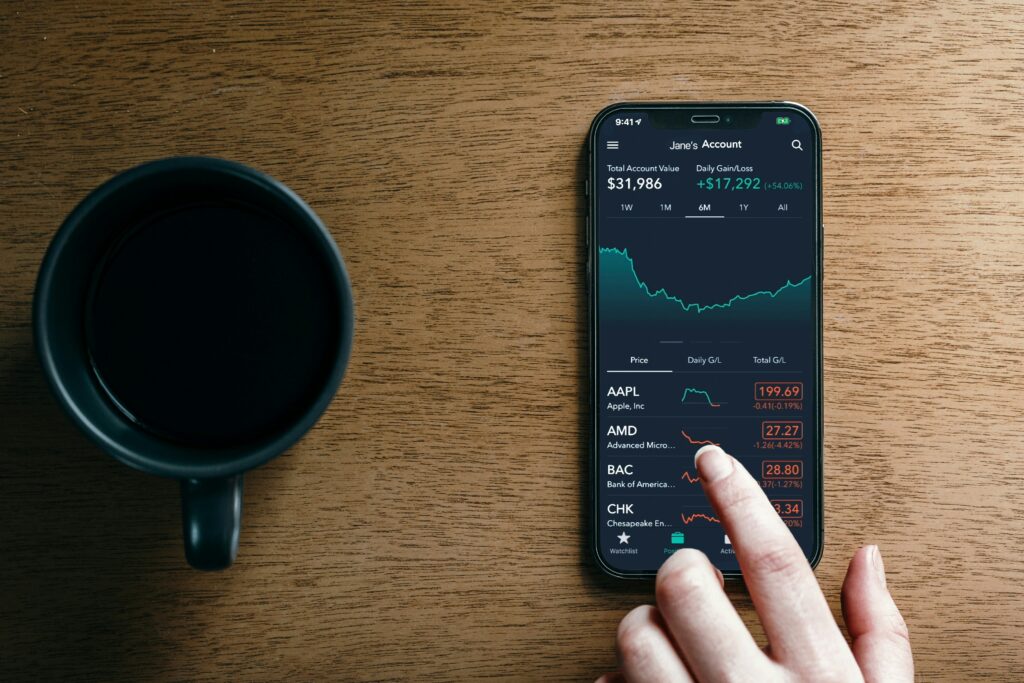A comprehensive guide to options trading & strategies
Options trading presents a unique and flexible way to invest in the financial markets. Essentially, options are contracts that grant you the right, but not the obligation, to buy or sell underlying assets at predetermined prices, known as strike prices, within a specified time frame. By understanding the fundamental concepts of options, you can leverage their potential in various ways.
Firstly, options can serve as a valuable tool for hedging risks. For instance, if you own a stock and are concerned about potential price declines, purchasing a put option can protect your investment. This strategy allows you to sell the stock at the strike price, thereby minimizing potential losses.
Furthermore, options trading provides an avenue for speculation on market movements. Investors can buy call options if they anticipate an increase in the asset’s price, allowing them to benefit from upward trends without needing to invest the full amount required to purchase the underlying asset. Conversely, if a decline in price is expected, traders can buy put options, positioning themselves to profit from downward movements.
Moreover, options can generate additional income through strategies like writing covered calls. In this case, you sell call options against stocks you already own, collecting premium income while retaining the possibility of capital appreciation. Thus, options trading not only enhances your investment strategy but also introduces opportunities for diversification and increased returns.

What are options?
Options trading presents a unique and flexible way to invest in the financial markets. Essentially, options are contracts that grant you the right, but not the obligation, to buy or sell underlying assets at predetermined prices, known as strike prices, within a specified time frame. By understanding the fundamental concepts of options, you can leverage their potential in various ways.
Firstly, options can serve as a valuable tool for hedging risks. For instance, if you own a stock and are concerned about potential price declines, purchasing a put option can protect your investment. This strategy allows you to sell the stock at the strike price, thereby minimizing potential losses.
Furthermore, options trading provides an avenue for speculation on market movements. Investors can buy call options if they anticipate an increase in the asset’s price, allowing them to benefit from upward trends without needing to invest the full amount required to purchase the underlying asset. Conversely, if a decline in price is expected, traders can buy put options, positioning themselves to profit from downward movements.
Moreover, options can generate additional income through strategies like writing covered calls. In this case, you sell call options against stocks you already own, collecting premium income while retaining the possibility of capital appreciation. Thus, options trading not only enhances your investment strategy but also introduces opportunities for diversification and increased returns.

How do options work?
The mechanics of options trading involve a comprehensive understanding of key components, such as the strike price, expiration date, and premium. Each of these elements plays a crucial role in determining the option’s value and how it is traded within the market.
Key components of options trading
Strike price
Firstly, the strike price is a fundamental concept in options trading. It refers to the predetermined price at which the underlying asset can be bought or sold when the option is exercised. Importantly, the relationship between the strike price and the current market price of the underlying asset significantly influences the option’s profitability. For instance, if the market price exceeds the strike price for a call option, the option is considered “in the money,” making it more valuable to the holder. Conversely, if the market price falls below the strike price for a put option, it similarly becomes “in the money,” presenting profitable opportunities for the option holder.
Expiration date
Secondly, the expiration date is another critical aspect that traders must consider. This date signifies the last day on which the option can be exercised, and its significance cannot be overstated. Options typically have a limited lifespan, which means that time decay will affect their value as the expiration date approaches. Therefore, traders must carefully assess how much time remains until expiration and how that time frame aligns with their market predictions. This dynamic creates a sense of urgency and can influence trading strategies, as options lose value over time if they remain unexercised.
Premium
Lastly, the premium is the price that a trader pays to purchase an option. This amount is influenced by several factors, including the intrinsic value of the option, the time remaining until expiration, and the volatility of the underlying asset. Generally speaking, a higher premium indicates that the market expects greater volatility or significant price movement in the underlying asset. Hence, understanding how premiums are determined is vital for traders, as it impacts both the cost of entering a trade and the potential return on investment.
Call options
Call options provide the holder with the right, but not the obligation, to purchase an underlying asset at a predetermined strike price before the option’s expiration date. These financial instruments are particularly appealing in bullish markets, where investors anticipate that the price of the underlying asset will increase.
By acquiring a call option, investors can effectively leverage their position, allowing them to profit from upward price movements without the need to buy the asset outright. This means that investors can control a larger number of shares for a smaller initial investment compared to purchasing the shares directly. If the market price of the underlying asset rises above the strike price, the investor can exercise the option, buying the asset at the lower strike price and potentially selling it at the higher market price for a profit. Alternatively, if the option is not exercised, the investor’s loss is limited to the premium paid for the option. This characteristic makes call options a strategic tool for investors seeking to capitalize on rising markets while managing risk effectively.
Put options
Put options grant the holder the right, but not the obligation, to sell an underlying asset at a specified strike price before the option expires. These options are particularly useful in bearish markets, where investors expect a decline in the price of the underlying asset.
By purchasing a put option, investors can effectively hedge against potential losses in their portfolios. For example, if an investor holds shares of a stock that they believe may decrease in value, buying a put option allows them to secure a selling price. If the stock’s price drops below the strike price, the investor can exercise the option and sell the shares at the higher strike price, thus mitigating losses.
Moreover, put options can also serve as a speculative tool, enabling investors to profit from falling prices. If the market price of the underlying asset declines below the strike price, the holder can either exercise the option to sell the asset at the strike price or sell the put option itself for a profit. This versatility makes put options a valuable instrument for managing risk and capitalizing on downward market trends.
American vs. European options
American options can be exercised at any time before the expiration date, providing greater flexibility for the holder. This type of option is commonly used in markets where investors may need to act quickly based on market movements. European options, on the other hand, can only be exercised at the expiration date. While this restriction limits flexibility, it can simplify pricing and risk management for these options.
Exotic options
Exotic options are more complex and less common than standard American and European options. They include varieties such as barrier options, which become active or inactive when the underlying asset reaches a predetermined price level, and binary options, which pay a fixed amount if a specific condition is met. These options are often used by advanced traders seeking tailored risk management strategies or speculative opportunities.

Strategies in options trading
Long call and long put
A long call strategy involves buying call options, which give the investor the right to purchase the underlying asset at a specified price within a certain timeframe. This strategy is used when the investor expects a significant rise in the asset’s price. Conversely, a long put strategy involves buying put options, which grant the right to sell the asset at a set price. This strategy is employed when anticipating a drop in the asset’s price.
Potential benefits and risks
The primary benefit of long-call and long-put strategies is the potential for substantial profits with limited initial investment. However, the risk is losing the premium paid for the options if the market does not move as anticipated. Both strategies offer leverage and a defined risk profile, with the premium representing the maximum loss.
Covered call and protective put
A covered call strategy involves holding the underlying asset and selling call options on the same asset. This strategy generates income from the premium received for the sold options, which can offset potential losses if the asset’s price declines. A protective put strategy involves holding the underlying asset and buying put options on the same asset. This acts as an insurance policy, protecting against significant losses if the asset’s price drops.
Benefits for income generation and risk management
Covered calls provide additional income through premium collection and can enhance returns in a stagnant or slightly bullish market. Protective puts offer downside protection, ensuring that losses are limited if the asset’s price falls. Both strategies balance potential returns with risk management, making them popular among conservative investors.
Advanced options trading strategies
Spreads
Spreads involve simultaneously buying and selling options of the same class but with different strike prices or expiration dates. Vertical spreads, also known as price spreads, involve options with the same expiration date but different strike prices. Horizontal spreads, or calendar spreads, involve options with the same strike price but different expiration dates. Diagonal spreads combine elements of both, with different strike prices and expiration dates.
Straddles and strangles
Straddles involve buying both a call and a put option at the same strike price and expiration date, benefiting from significant price movements in either direction. Strangles are similar but involve buying a call and a put with different strike prices, providing a wider range for potential profit but typically requiring a larger move in the underlying asset’s price.
Iron condors and butterflies
Iron condors and butterflies are complex strategies involving multiple options contracts. An iron condor involves selling an out-of-the-money call and put while buying a further out-of-the-money call and put options, creating a range within which the strategy profits from low volatility. A butterfly spread involves buying a call (or put) at one strike price, selling two calls (or puts) at a middle strike price, and buying another call (or put) at a higher strike price, profiting from low volatility near the middle strike price.

Understanding the Greeks in options trading
Delta
Delta is a measure of how much an option’s price is expected to change per one-dollar change in the price of the underlying asset. For call options, the delta ranges from 0 to 1, while for put options, it ranges from -1 to 0. A delta of 0.5, for example, indicates that the option’s price will change by 50 cents for every dollar move in the underlying asset. Delta is crucial for understanding the directional risk of an option.
Theta
Theta measures the rate at which an option’s price declines as it approaches expiration. This time decay accelerates as the expiration date gets closer, impacting the value of both call and put options. A theta of -0.05, for instance, means the option’s price will decrease by 5 cents each day, assuming other factors remain constant. Theta is particularly important for options traders focusing on strategies that involve holding options over time.
Gamma
Gamma measures the rate of change in delta for a one-dollar change in the price of the underlying asset. This second-order sensitivity helps traders understand how much the delta will change as the underlying asset’s price moves. High gamma values indicate that delta is highly sensitive to price changes, which can significantly affect an option’s price and risk profile.
Vega
Vega measures an option’s sensitivity to changes in the volatility of the underlying asset. It represents the amount by which the option’s price is expected to change for a one percentage point change in implied volatility. For example, a vega of 0.10 means the option’s price will increase by 10 cents if the implied volatility rises by one percent. Vega is crucial for assessing the impact of market sentiment and volatility on option pricing.
Rho
Rho measures an option’s sensitivity to changes in interest rates. It tells how much the price of an option is expected to change for a one percentage point change in interest rates. For instance, a rho of 0.05 suggests that the option’s price will increase by 5 cents if interest rates rise by one percent. Rho is particularly relevant for longer-term options and those traded in environments with fluctuating interest rates.
Minor greeks
In addition to the primary Greeks, there are several minor Greeks that provide further insights into the risk and sensitivity of options. These include lambda (leverage), which measures the percentage change in an option’s price for a one percent change in the price of the underlying asset; epsilon, which assesses the sensitivity to dividend yield changes; and vomma, which measures the sensitivity of vega to changes in volatility. These minor Greeks offer a more detailed view of the complexities involved in options pricing and risk management.
Key metrics in options trading
Implied volatility
Implied volatility (IV) reflects the market’s expectations regarding the future volatility of the underlying asset. Unlike historical volatility, which measures past price fluctuations, implied volatility is derived from the current market price of the option itself. It provides insight into how much the market believes the asset’s price is likely to fluctuate over the option’s lifespan.
When implied volatility is high, it suggests that the market anticipates significant price swings, indicating greater uncertainty about the asset’s future. This often leads to higher option premiums, as traders are willing to pay more for the potential of large price movements. Conversely, low implied volatility signals expectations of stability and smaller price changes, resulting in lower premiums.
Understanding implied volatility is crucial for options traders, as it can influence their trading strategies. Traders may choose to buy options during periods of low IV, aiming to profit when volatility increases, or sell options when IV is high, capitalizing on the inflated premiums before the market stabilizes. Ultimately, implied volatility serves as a key metric for evaluating the potential risk and reward in options trading.
Historical volatility
Historical volatility (HV) quantifies the actual past price fluctuations of an underlying asset over a specified timeframe. Unlike implied volatility, which projects future price movement expectations, HV analyzes past data to determine how much the asset’s price has varied. It is typically calculated using statistical measures like standard deviation, which gauges the dispersion of price changes around the average. By assessing historical volatility, traders can gain insights into the asset’s behavior during different market conditions, helping them make informed decisions about future trades. Understanding HV is crucial for developing effective risk management strategies in options trading.
Open interest
Open interest refers to the total number of outstanding options contracts that have not been settled or closed. It provides a snapshot of the market’s activity and interest in a particular option.
High open interest indicates active trading and significant interest in a particular option, suggesting strong market sentiment. Low open interest may signal less interest or a lack of liquidity, which can affect the ease of entering or exiting positions. Traders use open interest to gauge market participation and potential price movements.
Volume
Trading volume measures the number of options contracts traded during a specific period. It provides insights into market activity and trader interest.
High trading volume often indicates strong interest and momentum, suggesting potential price moves. Low volume means a lack of interest or consolidation. Traders use volume data alongside other metrics to confirm trends and assess the strength of market movements. A high volume on rising prices can signal a strong uptrend, while a high volume on falling prices may indicate a strong downtrend.
Options in different market conditions
Options in bull markets
In bull markets, investors anticipate rising prices. Call options are particularly useful, allowing traders to capitalize on upward price movements with a limited upfront investment. For instance, a trader might buy call options on a tech stock expected to perform well due to strong earnings forecasts. Another strategy is the bull call spread, where an investor buys call options at a lower strike price and sells call options at a higher strike price, reducing the net premium paid while still benefiting from a price rise.
Options in bear markets
In bear markets, where prices are expected to fall, put options become valuable tools. They provide the right to sell the underlying asset at a predetermined price, protecting against declines. For example, an investor might purchase put options on a market index when economic indicators suggest a downturn. Another effective strategy is the bear put spread, involving buying put options at a higher strike price and selling put options at a lower strike price. This strategy limits potential losses and reduces the cost of the trade.
Options in volatile markets
Volatile markets, characterized by significant price swings, require strategies that can profit from such movements. Straddles and strangles are popular choices. In a straddle, the investor buys both a call and a put option at the same strike price, profiting from substantial price movements in either direction. For instance, ahead of an earnings report, a trader might use a straddle on a stock expected to exhibit large price movements. In a strangle, the trader buys a call and a put option with different strike prices, allowing for a wider range of profitable outcomes in highly volatile conditions.

Advantages and disadvantages of options trading
Advantages of options
Leverage in options trading
Leverage in options trading allows investors to control a larger position in the underlying asset with a relatively small investment. This is possible because options provide the right to buy or sell the underlying asset at a fraction of the cost of purchasing the asset outright.
The primary benefit of leverage is the potential for substantial returns on a relatively small investment. For instance, instead of buying 100 shares of a stock priced at $100 each (totaling $10,000), an investor might buy an options contract for $500, gaining exposure to the same 100 shares. If the stock price rises significantly, the profit from the option could far exceed the initial $500 investment, demonstrating the power of leverage.
Options can be used to hedge risk
Options can serve as effective tools for hedging and managing risk. One common hedging strategy is the use of protective puts, where an investor holding a long position in a stock buys put options to safeguard against a decline in the stock’s price.
Another strategy is the covered call, where an investor writes call options on an owned stock to generate income while potentially selling the stock at a higher price if the options are exercised. These strategies help limit potential losses while maintaining upside potential.
Income generation
Options can also be used to generate regular income through various strategies. Writing (selling) options, such as covered calls, is a popular method for income generation.
In a covered call strategy, an investor who owns a stock sells call options on that stock, receiving a premium from the option buyer. The investor retains the premium as income if the stock price remains below the strike price.
Disadvantages of options
Complexity
Options trading involves understanding various factors, including strike prices, expiration dates, volatility, and the Greeks. This complexity can be overwhelming for new traders who are not familiar with the intricacies of options.
New traders might find it challenging to grasp the different strategies and their appropriate applications. The need to monitor multiple factors and make timely decisions adds to the complexity. Mistakes due to lack of understanding or experience can lead to significant financial losses.
Potential for significant losses
While options offer the potential for high returns, they also come with significant risks. The leverage that magnifies gains can also amplify losses, sometimes leading to a total loss of the invested premium.
For example, buying out-of-the-money options that expire worthless results in a 100% loss of the premium paid. Additionally, selling naked options (options without owning the underlying asset) can result in unlimited losses if the market moves significantly against the position.
Time decay
Theta measures the rate at which an option’s value declines as it approaches expiration. This time decay is a critical factor in options pricing, as the value of an option decreases over time, particularly as it nears its expiration date.
Time decay impacts options pricing by reducing the time value component of the option’s premium. For option buyers, this means that the option loses value each day, which can erode potential profits if the underlying asset does not move significantly in the anticipated direction. For option sellers, time decay works in their favor, as they can profit from the diminishing value of the options they have sold.
Managing risks in options trading
Managing risk is essential in options trading due to the high leverage and potential for significant losses. Options can amplify both gains and losses, making it critical for traders to implement robust risk management strategies. Without proper risk management, traders can quickly deplete their capital, especially in volatile markets where prices can move unpredictably.
Using stop-loss orders
Stop-loss orders are instructions placed with a broker to sell an option if it reaches a certain price, known as the stop price. This mechanism helps traders limit losses by exiting positions before they become too detrimental. In options trading, stop-loss orders can be set at various levels based on the trader’s risk tolerance and market conditions.
Benefits
The primary benefit of stop-loss orders is the ability to manage risk automatically without constant market monitoring. This can provide peace of mind and prevent emotional decision-making.
limitations
However, stop-loss orders have limitations, such as the possibility of being triggered by temporary price fluctuations, leading to premature exits. Additionally, in highly volatile markets, the actual execution price may differ from the stop price due to rapid price changes.
Takeaway note
Understanding options is essential for leveraging their benefits across different market conditions. Mastering calls, puts, strike prices, expiration dates, and premiums allow traders to effectively use options for speculation, hedging, and income generation. Employing the right strategies in bull, bear, and volatile markets, along with strong risk management, enhances trading success. With a solid foundation, traders can use options to achieve their financial goals.
FAQs
What are options and futures?
Financial options give investors the right to buy or sell an asset at a set price within a specific time frame. Futures compel the buyer or seller to trade an asset at a predetermined future date and price.
What is the safest option strategy?
The covered call strategy is often considered the safest, as it involves owning the underlying asset and selling call options on it, generating income while providing some downside protection.
What is the difference between stocks and options?
Stocks mean owning a part of a company with a share in its earnings and assets. Options are contracts that allow buying or selling an asset at a set price within a specific time.
Can you lose more money than you invest in options?
Yes, especially with strategies like naked call writing, where potential losses can be unlimited if the market moves significantly against the position.
How do options impact the underlying stock?
High trading volumes in options can signal market sentiment and potentially impact the underlying stock’s price due to market participants’ hedging activities.


